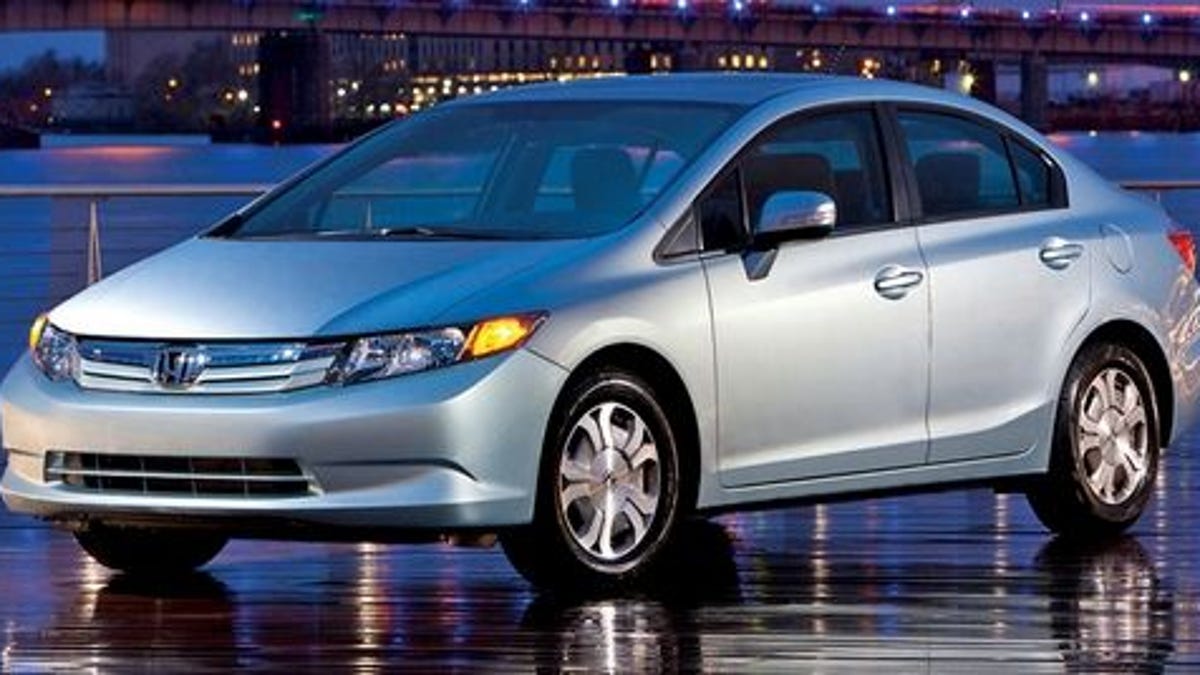Civic Hybrid tests Honda's new strategy
Automotive News reports on Honda's new Civic Hybrid.

TOKYO--Despite being the first to sell an electric-gasoline car in the United States and making hybrid technology a centerpiece of its fuel economy push, Honda Motor has yet to have a hybrid hit.
But the redesigned Civic Hybrid, launched April 20, is the first test of whether Honda's new strategy of tapping lithium ion batteries and, later, two-motor systems can break the streak.
Past Honda hybrids have fallen short on fuel economy, as the Insight did against the Toyota Prius, or on power, as the short-lived Honda Accord hybrid did against nonhybrid rivals. Honda's new hybrid plan aims to fix both problems.
The first improvement is using lithium ion batteries, made by Blue Energy, a joint venture between Honda and GS Yuasa. The goal is to save weight and space, while increasing fuel economy. But the new batteries are costly.
Higher mpg, sticker
The new Civic's lithium battery weighs 48.5 pounds, compared with 69 pounds for its predecessor's nickel-metal hydride battery. That helps the new Civic Hybrid get 44 mpg in both city and highway driving, edging [past] the previous generation's EPA rating of 40 city/43 highway.
The updated hybrid also gets a lighter, more powerful electric motor, with output increased to 17 kilowatts from 15 kilowatts. It also offers more cabin space.
Its sticker starts at $24,800, including shipping, just $100 more than the earlier version's base price. But the Civic's sticker tops the Prius' base price of $22,880, including shipping.
So far sales have been sluggish. That is due in part to limited availability of the Japan-made hybrid because of earthquake-induced supply chain disruptions. Through May, Honda sold only 389 new Civic Hybrids in the United States, less than 1 percent of all Civics sold in that period. In 2010, hybrids accounted for 3 percent of the 260,218 Civics sold.
But slashing costs eventually will be key to driving sales higher.
"Toyota has already reduced the cost of its hybrid system over several years," says Toru Hatano, a power-train analyst at IHS Global Insight in Tokyo. "But Honda is launching a whole new system, so we can expect their costs to be higher in the near term."
Two-motor hybrid
Honda also will install lithium ion batteries in a new two-motor hybrid system debuting next year in the United States for midsized plug-in hybrids.
Honda hasn't said what car will get it first. But engineers are testing the system in an Accord. A suitcase-sized lithium ion battery pack sits behind the back seat, eating trunk space.
An engineer involved with the project said testing is expected to continue through year end, and the company must decide if the 15-mile range in electric-only mode is sufficient. If user feedback suggests more range is needed, Honda will have to make the battery bigger or cut the car's weight, he said.
"We think a 15-mile range satisfies about 70 percent of the users," he said.
Already, Honda has tweaked the plug-in version of the Accord with an aluminum hood and other weight shavings. But the plug-in still weighs 330 pounds more than its gasoline counterpart.
Honda is rolling out the new hybrid system to counter criticism that its current technology is too weak to provide extended electric-only travel. The Integrated Motor Assist system used in the Insight, Civic, and CR-Z hybrids uses the electric motor mostly to assist the gasoline engine.
The new system uses one traction motor to move the car and one generator motor to recharge the battery. The former, a 120-kilowatt motor, is combined with a 2.0-liter, four-cylinder engine and continuously variable transmission.
The car has a top speed of 62 mph in electric-only mode, but a big question will be how far it can travel at that speed. The Accord plug-in hybrid can recharge in 4 hours from a 100-volt source or in 1.5 hours from a 200-volt source, the engineer said.
Honda President Takanobu Ito said last fall that the new hybrid system for larger vehicles will give electric-gasoline drivetrains a bigger slice of Honda's global sales--pushing hybrids to around 10 percent of global sales by 2015, from less than 5 percent in 2009.
The electrified power trains also will feature prominently in the Acura lineup, Ito said, reinforcing what he calls the "smart premium" image to which the brand aspires.
(Source: Automotive News)